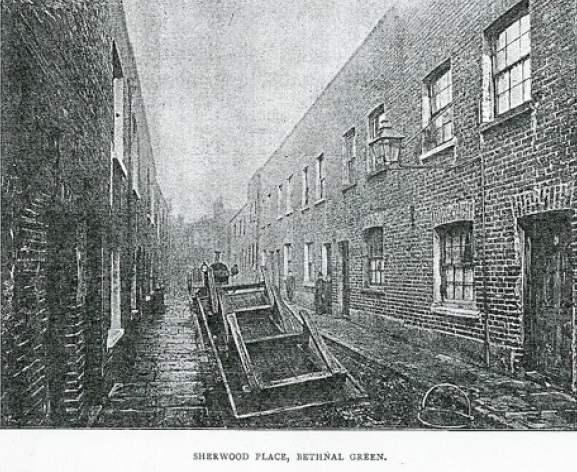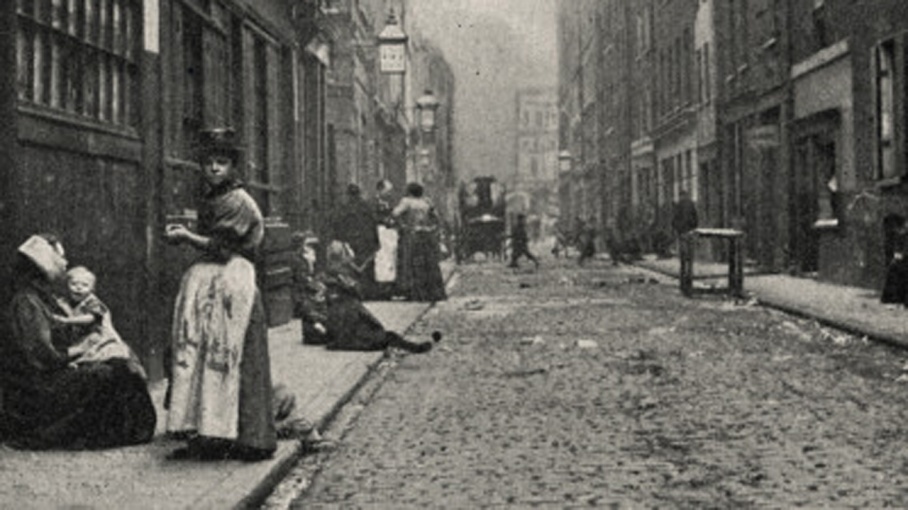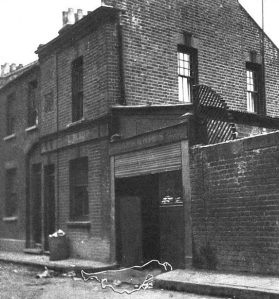 Quite inexplicably neither the official record of the Baxter Inquest into the death of Mary Ann Nichols, the Times nor the Morning Advertiser newspapers mention the address of the man Charles A. Cross (a name which we later discover to be an alias of Charles Allen Lechmere). This omission has led many to believe that he was reluctant, for reasons heretofore unknown, to give his home address, including this writer. Lechmere in fact did provide his address to Coroner Wynne Edwin Baxter and the inquest jury, and this was recorded as “22 Doveton Street, Cambridge Road” in the Star newspaper, Monday 3 September 1888. It must be concluded then that the Inquest record and the other newspapers simply neglected to mention that the man known there as ‘Cross’ did give an account of his home address. This may suggest that both the Times and the Morning Advertiser were dependent for their information on the inquest record. It is unlikely in the extreme to have been the other way around. Had the court recorder not taken down the address it is not likely then to have made it to the papers depending on it. The Star, on the other hand, appears to be taking its own notes.
Quite inexplicably neither the official record of the Baxter Inquest into the death of Mary Ann Nichols, the Times nor the Morning Advertiser newspapers mention the address of the man Charles A. Cross (a name which we later discover to be an alias of Charles Allen Lechmere). This omission has led many to believe that he was reluctant, for reasons heretofore unknown, to give his home address, including this writer. Lechmere in fact did provide his address to Coroner Wynne Edwin Baxter and the inquest jury, and this was recorded as “22 Doveton Street, Cambridge Road” in the Star newspaper, Monday 3 September 1888. It must be concluded then that the Inquest record and the other newspapers simply neglected to mention that the man known there as ‘Cross’ did give an account of his home address. This may suggest that both the Times and the Morning Advertiser were dependent for their information on the inquest record. It is unlikely in the extreme to have been the other way around. Had the court recorder not taken down the address it is not likely then to have made it to the papers depending on it. The Star, on the other hand, appears to be taking its own notes.
Another piece of important information that the Star of that date gives us is the record that Charles Allen Lechmere left for work at twenty minutes past three o’clock in the morning, and not the half past as recorded at the inquest and in the other papers. If the other papers are reliant on the court record then we can treat them as a single source as regards details of time and place. We may be looking at a simple case of either the coroner’s reporter or the pressman from the Star making a mistake. It is entirely possible then, at this stage, to suggest that the time Lechmere left his home was in fact twenty minutes past three, thus giving him a full forty minutes to make the walk to his place of work at Broad Street Station.
Of its 650 horses three hundred and more are under Broad Street Station, where they form not the least of the nightly attractions of that busy goods depot. The mention of the North Western agents – who are Messrs. Pickford & Co. – naturally leads us on to the carriers…
– W. J. Gordon, The Horse World of London, 1893




 One other possibility is that both men – Lechmere and Paul – were in league with one another. This theory, although farfetched, is not as farfetched as it might seem. PC John Neil (97J, Bethnal Green) reports that he had seen two slaughterhouse-workmen at work in the area about a quarter past three in the morning, and again when he discovered the body of Nichols. Only seconds after Lechmere and Paul leave the scene Neil arrives, and before PC Mizen gets to him, two men wander towards PC Neil and the body of Mary Ann Nichols. May these two men be Lechmere and Paul? This would explain the confusion of Mizen stating that the two men told him that another policeman wanted him on Buck’s Row. This theory is not very strong at all, and is mentioned here only to highlight the logical possibility.
One other possibility is that both men – Lechmere and Paul – were in league with one another. This theory, although farfetched, is not as farfetched as it might seem. PC John Neil (97J, Bethnal Green) reports that he had seen two slaughterhouse-workmen at work in the area about a quarter past three in the morning, and again when he discovered the body of Nichols. Only seconds after Lechmere and Paul leave the scene Neil arrives, and before PC Mizen gets to him, two men wander towards PC Neil and the body of Mary Ann Nichols. May these two men be Lechmere and Paul? This would explain the confusion of Mizen stating that the two men told him that another policeman wanted him on Buck’s Row. This theory is not very strong at all, and is mentioned here only to highlight the logical possibility.


 Between ten and twenty minutes after Lechmere makes this discovery Robert Paul enters the street from the east, the same side Lechmere claims to have entered by, and we are told that Lechmere heard him coming. According to the conclusions of Llewellyn the woman has only just died. In fact, as Paul’s testimony indicates, she may have still been hanging onto life when he examined her, and he saw no one leaving the street as he approached. By this time Lechmere has been on Buck’s Row alone for at least ten minutes. Paul walks east-to-west, like Lechmere, along the Row but on the south-side. At the inquest he would say that Lechmere was standing in the middle of the road, but to Lloyd’s Weekly on the night of the murder he has Lechmere “standing where the woman was.” Paul was aware, as he had said to the newspaper reporter, that this was a notoriously dangerous area and stepped out onto the road to give Lechmere “a wide berth.” On passing Lechmere, however, Lechmere touched him on the shoulder and spoke, indicating the presence of the woman “who was lying across the gateway.” While Paul has apparently nothing to hide, Charles Lechmere’s account differs. According to the latter he was in the middle of the road and Paul was on the footpath on the north-side of the Row. After he indicated the presence of the woman to Paul they both crossed over to her.
Between ten and twenty minutes after Lechmere makes this discovery Robert Paul enters the street from the east, the same side Lechmere claims to have entered by, and we are told that Lechmere heard him coming. According to the conclusions of Llewellyn the woman has only just died. In fact, as Paul’s testimony indicates, she may have still been hanging onto life when he examined her, and he saw no one leaving the street as he approached. By this time Lechmere has been on Buck’s Row alone for at least ten minutes. Paul walks east-to-west, like Lechmere, along the Row but on the south-side. At the inquest he would say that Lechmere was standing in the middle of the road, but to Lloyd’s Weekly on the night of the murder he has Lechmere “standing where the woman was.” Paul was aware, as he had said to the newspaper reporter, that this was a notoriously dangerous area and stepped out onto the road to give Lechmere “a wide berth.” On passing Lechmere, however, Lechmere touched him on the shoulder and spoke, indicating the presence of the woman “who was lying across the gateway.” While Paul has apparently nothing to hide, Charles Lechmere’s account differs. According to the latter he was in the middle of the road and Paul was on the footpath on the north-side of the Row. After he indicated the presence of the woman to Paul they both crossed over to her.
 Charles Allen Lechmere, presenting himself as Charles Allen ‘Cross’ to Mr. Baxter’s inquest, states that he left for work on the morning of Friday 31 August 1888 at half past three. His home, if 22 Doveton Street is correct, is about one hundred and fifty meters east of St. Bartholomew’s Church, so hearing the chime of the half hour in the early hours would not have been a problem. We have reason to believe that he usually left home at twenty past three to make the forty minute walk to Messrs. Pickford and Co. on Broad Street for a four o’clock starting time. Yet on this morning he says that he left at half past, and states at the inquest that he was “behind time.” He then claims to have had walked “down Parson Street, crossed Brady Street, and through Buck’s Row;” a journey of no more than five minutes by foot in 1888. There is no such place as Parson Street in Bethnal Green or in Whitechapel, and is therefore most likely to be a mishearing of Barnsley Street or a local name for the pathway running between the recreational grounds (to the south) and St. Bartholomew’s Church (to the north) which links Doveton Street (through Oxford Street) to Barnsley Street. This route would have been one of the most convenient for him to take.
Charles Allen Lechmere, presenting himself as Charles Allen ‘Cross’ to Mr. Baxter’s inquest, states that he left for work on the morning of Friday 31 August 1888 at half past three. His home, if 22 Doveton Street is correct, is about one hundred and fifty meters east of St. Bartholomew’s Church, so hearing the chime of the half hour in the early hours would not have been a problem. We have reason to believe that he usually left home at twenty past three to make the forty minute walk to Messrs. Pickford and Co. on Broad Street for a four o’clock starting time. Yet on this morning he says that he left at half past, and states at the inquest that he was “behind time.” He then claims to have had walked “down Parson Street, crossed Brady Street, and through Buck’s Row;” a journey of no more than five minutes by foot in 1888. There is no such place as Parson Street in Bethnal Green or in Whitechapel, and is therefore most likely to be a mishearing of Barnsley Street or a local name for the pathway running between the recreational grounds (to the south) and St. Bartholomew’s Church (to the north) which links Doveton Street (through Oxford Street) to Barnsley Street. This route would have been one of the most convenient for him to take.